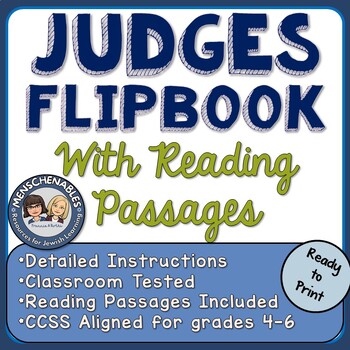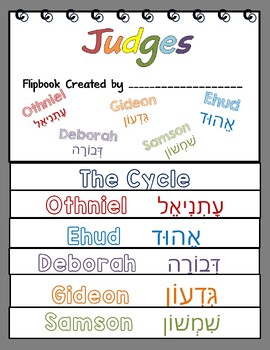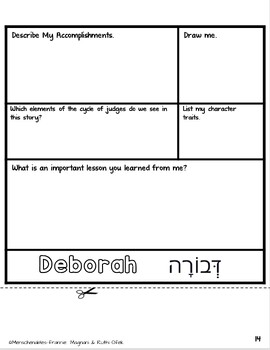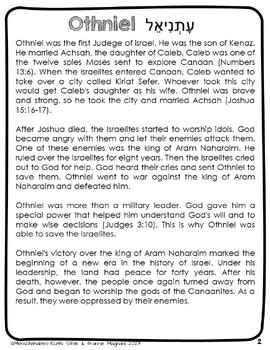Judges-Reading Comprehension and Flipbook Project
- PDF
Description
This Flipbook is a great companion to the study of the Book of Judges. It utilizes the content of the Book of Judges while enforcing many Common Core ELA Standards/Skills.
•The students will read about the individual judges before they begin the project.
•Included is a brief English text about each judge as well as an overview of the Book of Judges.
•Also included are links to online versions of the Hebrew text for the Book of Judges as well as several engaging videos.
*For each grade 4th-6th, we included a checklist of the CCSS ELA that correlate with the reading, discussion, and project.
•There are detailed directions for the students as well as complete instructions and class discussion guidelines for the teacher.
•The finished products can be bound by staples, holes with string or twine, or the use of a binding machine.
This is a hands-on projects which offer several benefits to students and this one is no exception.
- Active Learning: Hands-on projects engage students actively in the learning process. This active participation helps them understand and retain information better than passive learning methods.
- Critical Thinking: Working on projects requires students to think critically, solve problems, and make decisions. It fosters a deeper understanding of concepts and encourages analytical thinking.
- Creativity: Hands-on projects stimulate creativity by allowing students to explore different ideas, methods, and solutions. It encourages them to think outside the box and express their unique perspectives.
- Collaboration: Group projects promote collaboration and teamwork. Students learn how to communicate effectively, share responsibilities, and work together towards a common goal, preparing them for future collaborative endeavors.
- Application of Knowledge: Hands-on projects enable students to apply theoretical knowledge to practical situations. This practical application enhances their understanding of concepts and helps bridge the gap between theory and real-world scenarios.
- Motivation and Engagement: Active participation in projects often increases students' motivation and engagement with the subject matter. When they see the real-world relevance of what they are learning, it becomes more meaningful and interesting to them.
- Problem-Solving Skills: Hands-on projects often involve overcoming challenges and solving problems. This helps students develop valuable problem-solving skills that are applicable across various areas of life.
- Enhanced Memory Retention: The combination of sensory experiences in hands-on projects contributes to better memory retention. Students are more likely to remember what they learned through practical application.
- Life Skills: Beyond academic knowledge, hands-on projects help develop life skills such as time management, organization, and effective communication – skills that are valuable in both academic and personal settings.
- Increased Confidence: Successfully completing hands-on projects gives students a sense of accomplishment and boosts their confidence. It instills a positive attitude towards learning and encourages them to take on more challenges.
Check out our Fruits and Vegetables Domino Sets for even more engaging and fun learning! Or our new Purim Logic Puzzle!





